Last season we had the amazing opportunity to go skiing in Japan. It was everything I could’ve imagined and more. While we’ve skied in remote parts of Canada and the United States, this was a whole different level of adventure. We made A LOT of mistakes and got some great tips from our guides at Japan Ski Tours. To help future adventures, here’s ten things to know ahead of skiing in Japan to make it an even more fun trip.
Separate Your Domestic & International Flights
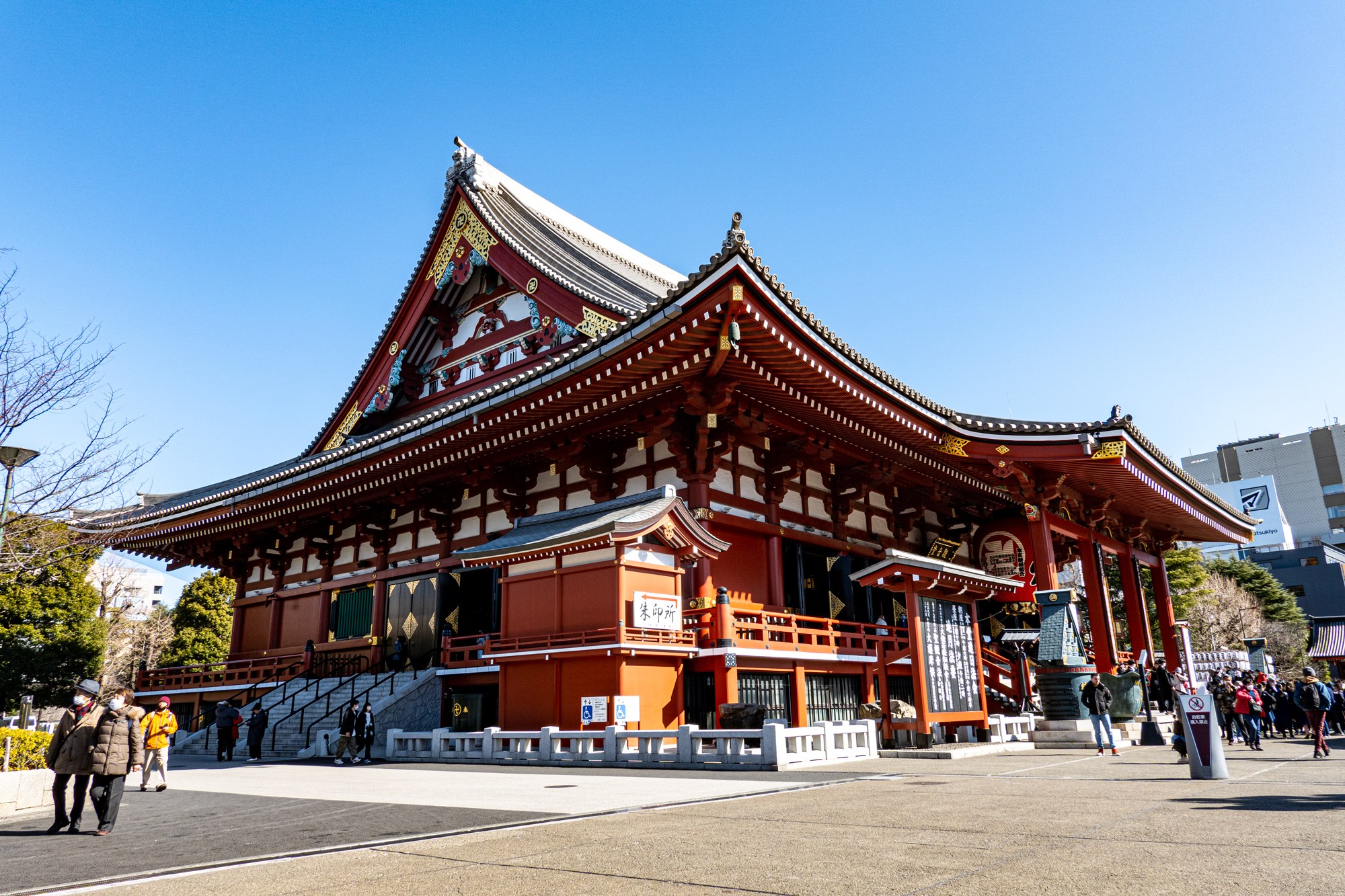 The ancient Sensō-ji temple near Nakamise Street in the Tokyo neighborhood of Asakusa – Photo by: Jaime Pirozzi – Local Freshies®
The ancient Sensō-ji temple near Nakamise Street in the Tokyo neighborhood of Asakusa – Photo by: Jaime Pirozzi – Local Freshies®
There’s more than one good reason to book your Japan trip this way and it’s not just about checking off all the must-see sights. For starters, almost every international flight lands in Tokyo. But here’s the kicker: if you book your domestic flights separately from your international one, you could save hundreds of dollars. Seriously! Japan’s airline system runs on a hub and spoke model with Tokyo being the main hub. That means most flights start or end there and get this domestic flights are often cheaper than taking the bullet train for long distances. Wild, right?
Skip the Cab, Take the Metro
Grabbing a cab in Japan might be easy but be ready to pay a premium. Taxis are incredibly expensive, especially when traveling between Narita or Haneda airports and downtown Tokyo. Think around $200 USD one way. Ouch. It might take a little longer but the Tokyo Metro is a much better deal. We only paid about $4 one way! It might be daunting but all signs are printed with English as well. Since you probably won’t have WiFi right away, it’s a smart move to plan your Metro route to the hotel ahead of time while you’re still at home.
Ship Your Gear to the Resort
One downside to the Metro is that it can be a huge hassle when you’re carrying luggage. At our stop, we had to haul our bags up more than four flights of stairs and we couldn’t even find an elevator. Enter Takuhaibin also known as Takkyubin or Ta Q Bin. This convenient luggage delivery service lets you ship your gear straight from the airport to your first ski destination. Just allow about three days before and after your ski trip depending on the location. The cost is around $20 each way. And with the $400 or more you’ll save by skipping the cab you can take your time exploring Tokyo and the surrounding countryside instead.
Sea Effect Is Real
 A fleeting glimpse of the Sea Of Japan in between snow bands – Photo by: Jaime Pirozzi – Local Freshies®
A fleeting glimpse of the Sea Of Japan in between snow bands – Photo by: Jaime Pirozzi – Local Freshies®
After years of American ski resorts over reporting and over hyping storms, my expectations for a place nicknamed “JAPOW” were set low. Seriously, how could a place get THAT much consistent snowfall? Answer: Sea effect. It was glorious. Similar to lake effect snow, one moment it’s absolutely bluebird, and the next, it’s nuking where you can’t see your hand. That also means one ski area gets hammered while another gets skunked. Having the flexibility to choose where you ski each day can make or break your trip. Booking an itinerary that lets you chase the storms is key to scoring the best snow.
Hire a Guide
On paper, Japan ski resorts seem “small” with the count of their trails. The reason being is that the best skiing at each one of them is in between in the gladed areas. If you have enough time, you probably could poke around and find all the stashes but our best experiences of our trip were when we had a guide. When the the main zones got tracked out, he pointed us to the low hanging fruit inside the resort, and then as the snow began to subside, the next day we ventured into the backcountry surrounding Aomori. For those that really want to ensure high quality turns, Japan Ski Tours offers guided off-piste trips. Their local knowledge makes sure you’re skiing Japan’s powder instead of looking from afar.
Slow Yer Sushi Roll
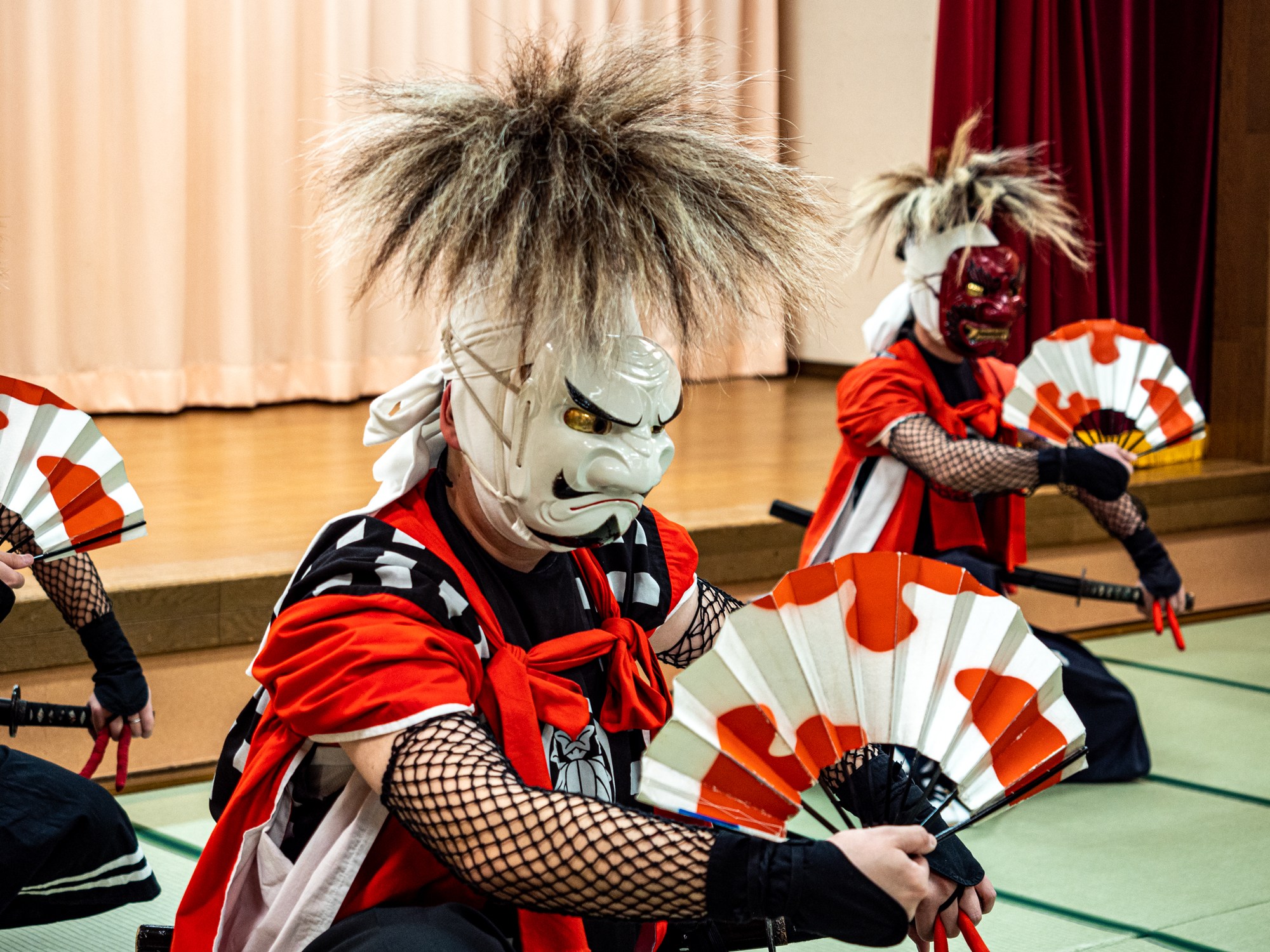 Dancers doing the Oni Kenbai which only is done in the Iwate Prefecture in Japan and has been awarded the rare distinction as a UNESCO heritage dance – Photo by: Jaime Pirozzi – Local Freshies®
Dancers doing the Oni Kenbai which only is done in the Iwate Prefecture in Japan and has been awarded the rare distinction as a UNESCO heritage dance – Photo by: Jaime Pirozzi – Local Freshies®
In North America, powder panic is real. The thirst for getting first tracks and beating others to it has personally created a very toxic experience. Japan’s ski scene doesn’t feel that way. Rather, the lift lines are non-existent, and the snow is deep. Don’t just focus on the skiing either. Immerse yourself in the culture. Spend a day checking out unique things like an ancient Onsen where a Shogun bathed or explore an actual Samurai village in Kakunodate.
Dip Into The Onsen Experience As Soon As You Get Here
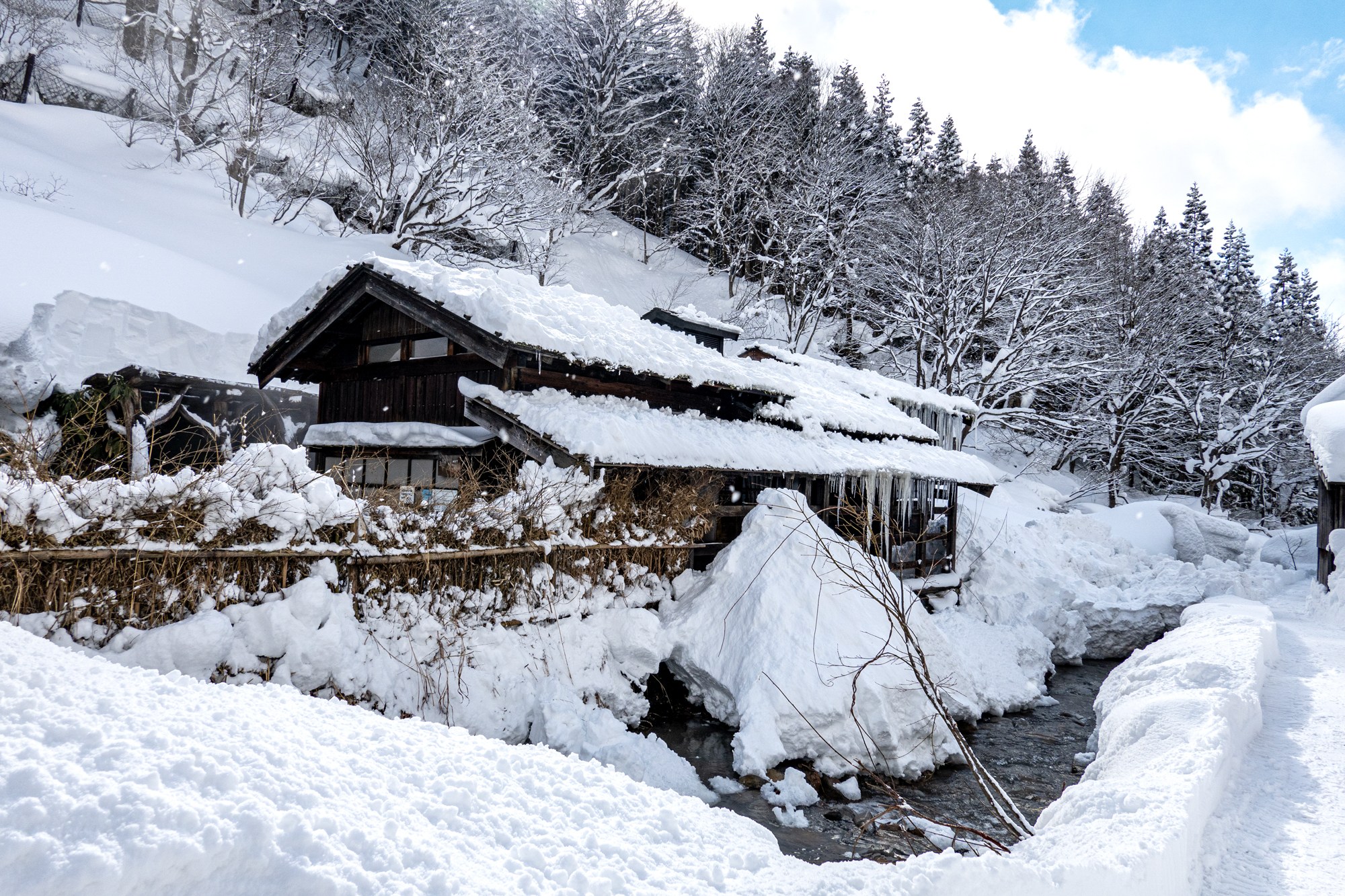 People including a famous Shogun have been bathing at the Tsurunoyu Onsen since the 1600’s – Photo by: Jaime Pirozzi – Local Freshies®
People including a famous Shogun have been bathing at the Tsurunoyu Onsen since the 1600’s – Photo by: Jaime Pirozzi – Local Freshies®
In a country the size of California, there are more than 25,000 hot springs with over 3,000 of them accessed via traditional inns or resorts. The word “Onsen” means hot springs in Japanese, but it’s MUCH more than that. It’s been an integral part of Japanese culture for thousands of years and something everyone should try. The one asterisk that it took me a bit to get over – you have to be fully naked. The reason being is that the spring waters are so pure they don’t want laundry detergent or any of your dirt in it. I’ll let you in on a secret – I’ve got bad memories of high school gym class and showers. It took me most of the trip to peel away those stigmas, but I was glad I did. It isn’t weird and no one even notices or cares. In fact, it was even more peaceful. There is etiquette to follow so use this guide to help direct you on how to do it properly.
Japanese Cuisine Isn’t Just Sushi
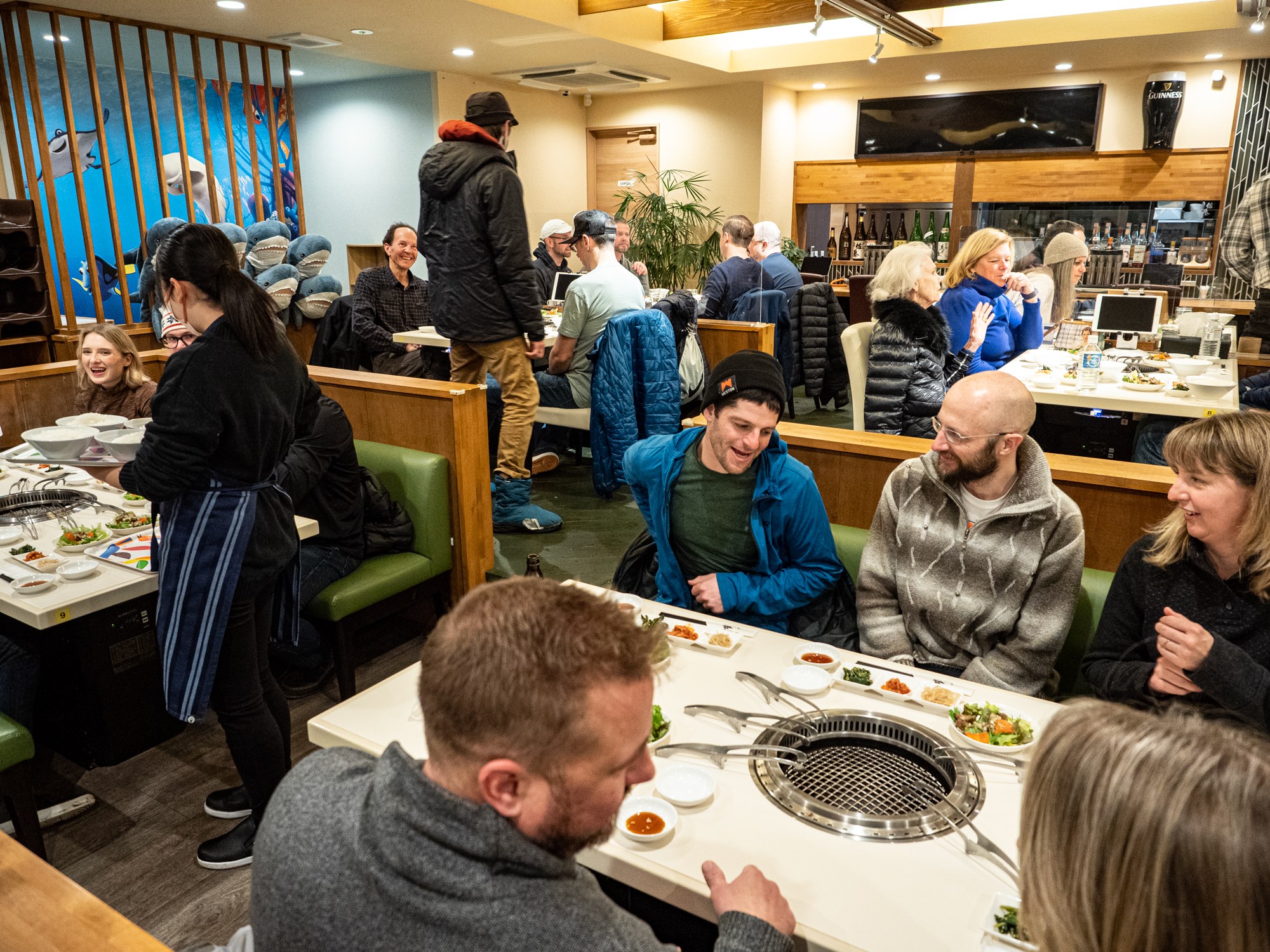 Everyone awaiting their meats at a Yakiniku restaurant called Fabio in Japan – Photo by: Jaime Pirozzi – Local Freshies®
Everyone awaiting their meats at a Yakiniku restaurant called Fabio in Japan – Photo by: Jaime Pirozzi – Local Freshies®
For how much sushi has invaded American culture, you would think the only thing Japanese eat is sushi. It’s far from the truth. Traditional Japanese is focused on what’s in season and each part of the country specializes in certain foods. For example, in the Akita region you’ll want to try the smoked daikon. Iwate is a dairy region so they’re known for their thick yogurt. If you get a chance, hit up a Yakiniku restaurant. Meat lovers will enjoy the opportunity to cook bite-sized meats and vegetables over an open grill. This is just a small blip in the wide array of foods to try.
What They Call Wagyu Beef In America Is A Lie
Speaking of cuisine… I’ve had Wagyu in the United States, and it tasted ok but nothing special. At a Yakiniku restaurant, a plate of raw Wagyu beef was brought to us. After a quick sear on each side, I took a bite. It was unlike ANY beef I’ve ever had before. It was as if the meat was a piece of butter that melted on your tongue and so flavorful too! They may call it Wagyu Beef stateside, but it isn’t anything like the version you enjoy in Japan.
Grab A Pocket Wi-Fi
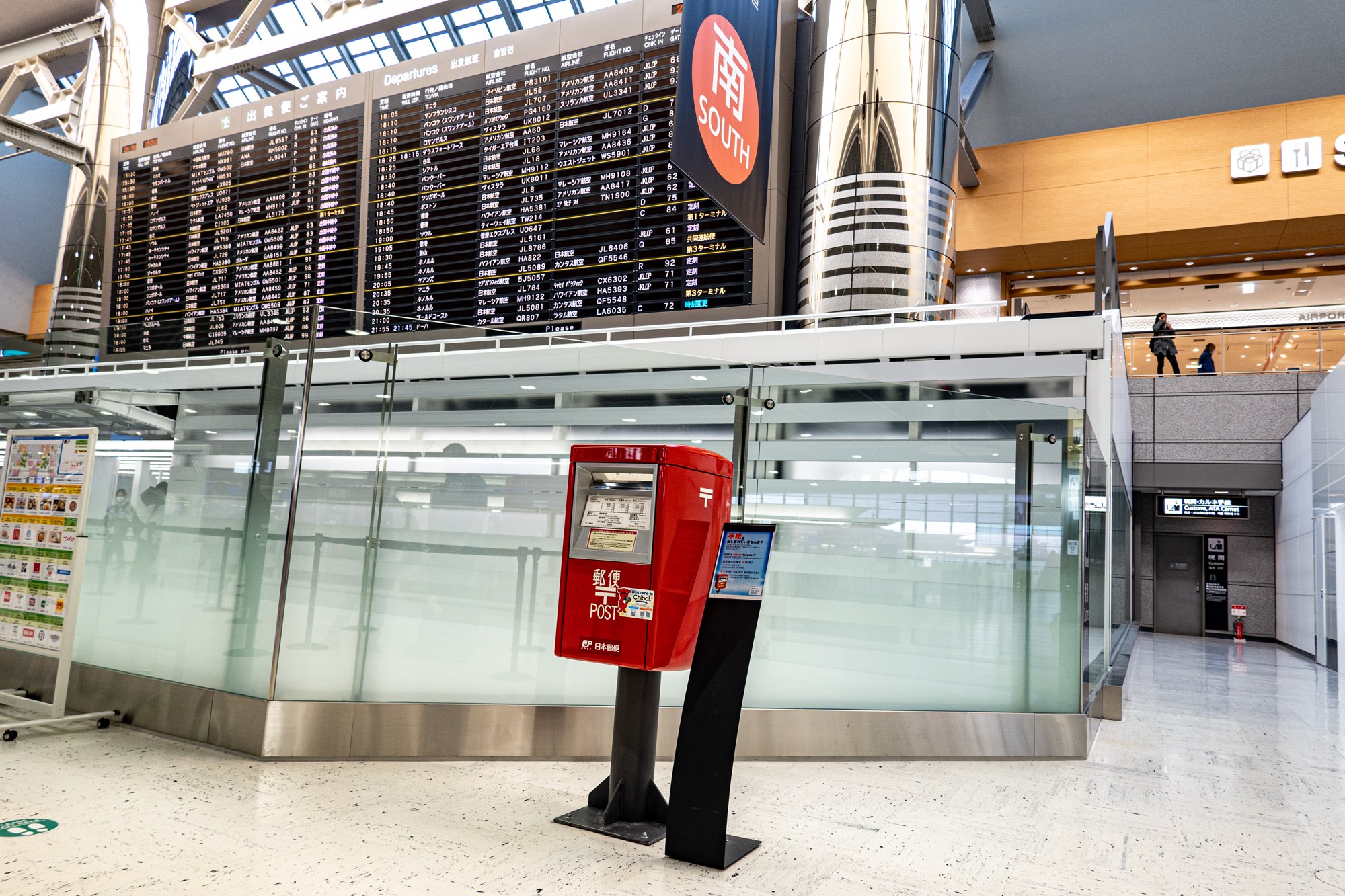 This postal box at Narita Airport is literally right at the security gate – Photo by: Jaime Pirozzi – Local Freshies®
This postal box at Narita Airport is literally right at the security gate – Photo by: Jaime Pirozzi – Local Freshies®
Japan is a country that’s always leading in technology. So it shouldn’t come as a surprise that they would have a solution for Wi-Fi. Not just good, but AWESOME. As the name suggests, the pocket Wi-Fi is a small puck that you throw in your pocket giving you access to HQ Wi-Fi anywhere you’re at in the country. You can keep your phone in airplane mode and stay connected to friends/family, social networks, and even get some work done if need be. We used Sakura Mobile, and it worked perfectly.
Don’t Poo Poo Quickie Marts
When you have a hunger for munchies, we’ve all made that quick hit to a 7-11. It isn’t good, but it does the job. In Japan, their quickie marts are at a whole different level. Scrumptious steamed pork buns, onigiri (rice triangles/balls), multi-flavored Kit Kats, and an assortment of delicacies you wouldn’t expect. Don’t knock it before you try it.
Get Insurance!
No matter how cautious you are, things happen. Regular insurance won’t cover evacuation to your home country if you need to go home for surgery. In addition, we brought backcountry gear, resort equipment, and an enormous amount of photo equipment. We used World Nomads Insurance for two people going on a 10-day trip covering trip travel issues, medical expenses, and $3K coverage each in gear, and it cost us both less than three hundred bucks.
Narita Airport – Food Before Security
You’re glowing from the face shots you got. All luggage is stuffed to the brim with souvenirs and gifts. You quickly rush through security and notice there is only a handful of restaurants. DO NOT go through security until you’ve had dinner. Nearly all the best food is BEFORE security in Terminal 2.
We did our trip through Japan Ski Tours and couldn’t be happier with their service. If you do book a trip through them, be sure to let them know Local Freshies® sent ya.
Local Freshies® Trip Experience On Film
If you’re still on the fence, here’s a short film showcasing our experience in Japan’s Tohoku region.

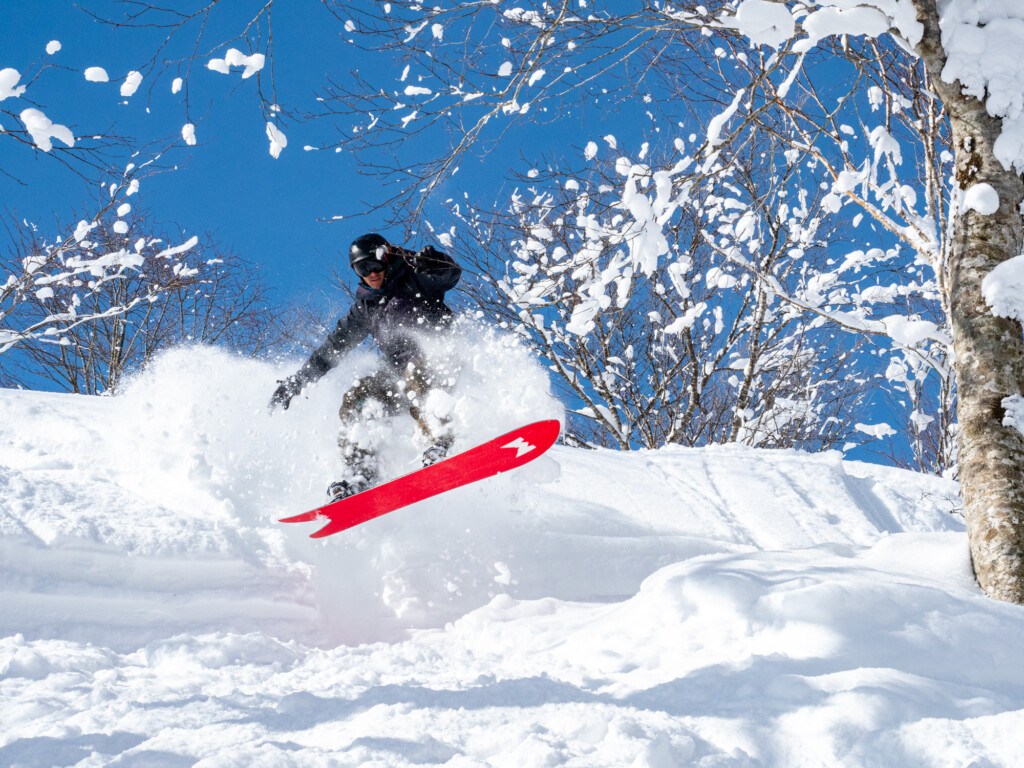
AloJapan.com